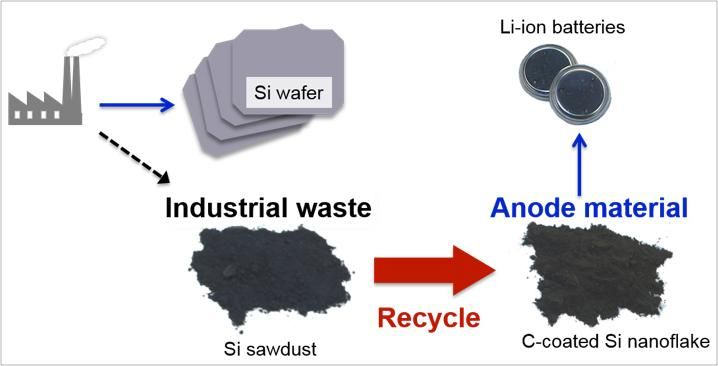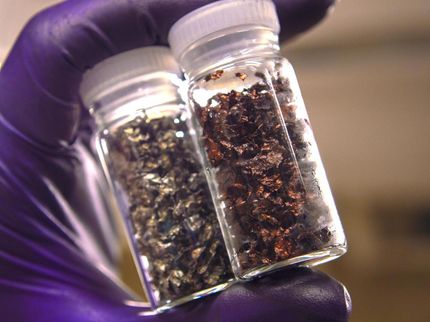Waste silicon sawdust recycled into anode for lithium-ion battery
Researchers have created a high performance anode material for lithium-ion batteries (LIBs) using waste silicon (Si) sawdust.

This is a production process from silicon sawdust to lithium battery anode.
Hirotomo Nishihara
It is energy-consuming and expensive to produce Si wafers with high purity (> 99.99%). On top of that, some 50% of Si is actually discarded as industrial waste in the final cutting process. This waste is about 90 thousand tons a year worldwide, an amount large enough to meet the global demands for anode materials for LIBs.
To make this happen, under the project of "Dynamic Alliance for Open Innovation Bridging Human, Environment and Materials," a joint research team from Tohoku University and Osaka University has developed a practical and mass-producible method of recycling the unwanted Si sawdust into a high-performance anode material for LIBs.
The team found that the pulverization of the Si sawdust into Si nanoflakes (~16 nm in thickness) and the subsequent carbon coating are effective in fabricating high capacity and durable LIBs. So far, a test half-cell has achieved a constant capacity of 1200 mAh/g over 800 cycles. This capacity is 3.3 times as large as that of conventional graphite (ca. 360 mAh/g).
The proposed method of material recycling is applicable for the mass production of high-performance LIB anode materials at a reasonably low cost. The research team expects that it will have great practical use in the battery industry.
Original publication
Other news from the department science
These products might interest you
Most read news
More news from our other portals
See the theme worlds for related content
Topic World Battery Technology
The topic world Battery Technology combines relevant knowledge in a unique way. Here you will find everything about suppliers and their products, webinars, white papers, catalogs and brochures.

Topic World Battery Technology
The topic world Battery Technology combines relevant knowledge in a unique way. Here you will find everything about suppliers and their products, webinars, white papers, catalogs and brochures.






























































